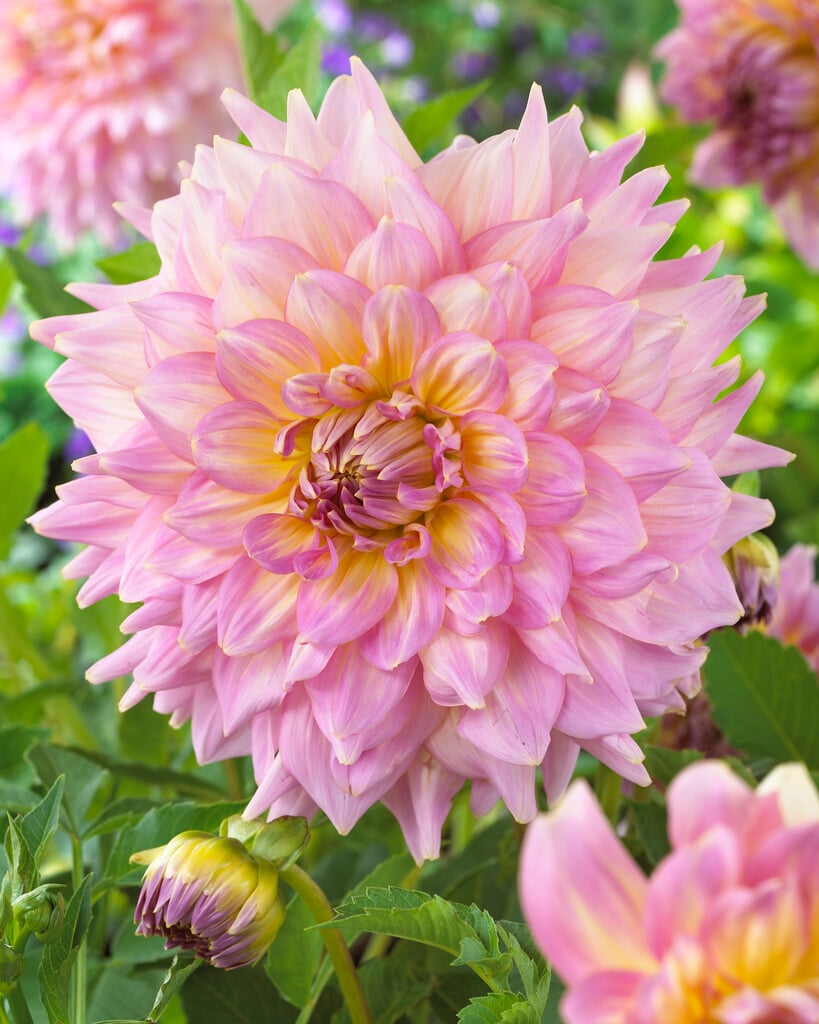Size
Ultimate height
0.5–1 metresTime to ultimate height
1–2 yearsUltimate spread
0.1–0.5 metresGrowing conditions
Moisture
Moist but well–drainedpH
Acid, Alkaline, NeutralColour & scent
| Stem | Flower | Foliage | Fruit | |
| Spring | ||||
|---|---|---|---|---|
| Summer | Pink Cream Yellow | Green | ||
| Autumn | Pink Cream Yellow | Green | ||
| Winter |
Position
- Full sun
Aspect
South–facing or East–facing
Exposure
Sheltered Hardiness
H3Botanical details
- Family
- Asteraceae
- Native to GB / Ireland
- No
- Foliage
- Deciduous
- Habit
- Clump forming
- Genus
Dahlia are tuberous rooted perennials with pinnately divided leaves and showy flowerheads, double in many cultivars, in summer and autumn
- Name status
Accepted
- Horticultural Group
- Decorative dahlias have fully double flowerheads with flat or slightly incurved florets
How to grow
Cultivation
Grow in fertile, humus-rich, well-drained soil, enriched with organic matter and general purpose fertiliser, in full sun. Pinch out growing tips to encourage bushy plants and stake. Water freely in dry periods. Lift and store tubers in autumn to replant or use as a source of cuttings in spring
Propagation
Propagate by softwood cuttings taken in spring from shoots from stored tubers, or divide the tubers ensuring each division has a viable bud
Suggested planting locations and garden types
- City and courtyard gardens
- Cottage and informal garden
- Patio and container plants
- Cut flowers
- Flower borders and beds
Pruning
Deadhead to prolong flowering. Cut back to near ground level in the autumn, before lifting and storing for the winter
Pests
Aphids, leaf miners, glasshouse red spider mite and slugs are common pests. Earwigs sometimes damage blooms. Capsid bug and caterpillars are occasional pests
Diseases
Powdery mildews can be damaging in dry conditions. In wet weather grey moulds and other fungal rots can be a problem. Fungal rots can also damage stored tubers. A virus may cause stunting, leaf markings and distortion
Get involved
The Royal Horticultural Society is the UK’s leading gardening charity. We aim to enrich everyone’s life through plants, and make the UK a greener and more beautiful place.
